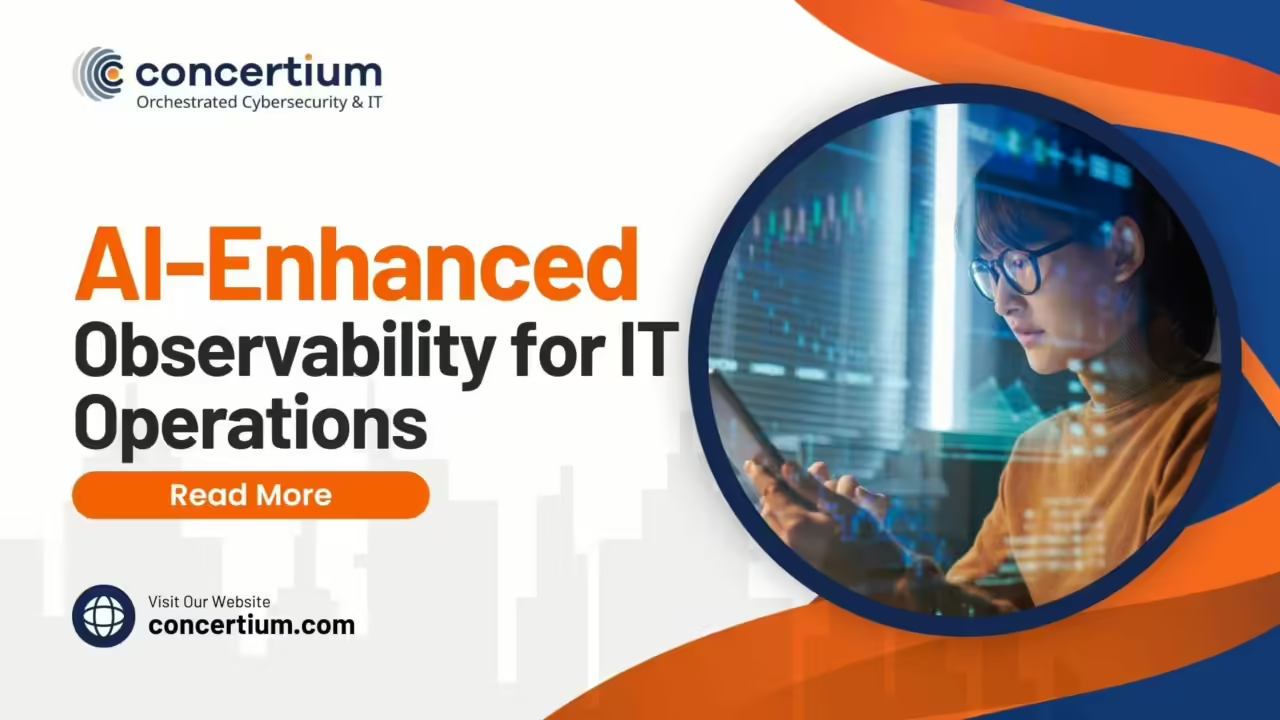Benefits of AI-Enhanced Observability
Advanced observability is the practice of collecting and analyzing data from various IT systems to gain comprehensive visibility into their operations. This practice goes beyond traditional monitoring by providing deeper insights into system performance and user behavior.
Observability is crucial for IT operations because it helps identify and resolve issues quickly, ensuring smooth system performance and minimizing downtime. By leveraging advanced observability, IT teams can gain a clearer understanding of their systems and make more informed decisions.
AI-enhanced advanced observability takes this a step further by integrating artificial intelligence to analyze data more efficiently. This approach uses machine learning and generative AI techniques to provide predictive insights and automate responses to potential issues. By doing so, it significantly enhances the effectiveness of observability solutions.
Understanding Advanced Observability
Definition and Core Components
Advanced observability involves the collection and analysis of metrics, logs, and traces from IT systems to provide a holistic view of their performance. Metrics are numerical data points that measure system performance, such as CPU usage or network latency. Logs are detailed records of events and transactions within the system. Traces follow the path of a request through various system components, helping to identify bottlenecks or failures.
By combining these three core components, advanced observability offers a comprehensive understanding of system behavior. This visibility enables IT teams to proactively identify and address issues, optimize performance, and ensure a seamless user experience.
Traditional Observability vs. Advanced Observability
Traditional observability focuses mainly on monitoring specific metrics and logs to detect issues after they occur. In contrast, advanced observability provides real-time, actionable insights by analyzing a broader range of data. For instance, while traditional methods might alert you to a problem after it affects users, advanced observability can predict potential issues before they impact performance.
The benefits of advanced observability include faster incident detection, more efficient resource utilization, and the ability to proactively address potential issues. Therefore, integrating advanced observability into your IT operations can lead to more reliable and optimized systems.
The Role of AI in Advanced Observability
How AI Enhances Observability
Artificial intelligence (AI) enhances observability by analyzing large volumes of data quickly and accurately. AI-driven insights can detect anomalies and patterns that might be missed by human analysts. For instance, AI can identify subtle changes in metric patterns that indicate a potential issue, allowing for proactive intervention.
Additionally, AI enables predictive analytics, which can forecast future system behavior based on historical data. This capability allows IT teams to anticipate and prevent problems before they occur, ensuring smoother operations and better user experiences. Moreover, integrating AI with observability solutions creates a more robust and reliable IT infrastructure.
AI Techniques Used in Observability
Several AI techniques are used to enhance observability, including machine learning algorithms, natural language processing (NLP), and pattern recognition. Machine learning algorithms analyze historical data to identify trends and predict future outcomes. NLP helps in processing and understanding large volumes of unstructured data, such as logs.
Pattern recognition allows AI to detect unusual behaviors that may indicate a problem. For example, AI can recognize patterns in network traffic that suggest a security breach, enabling faster response times. By using these AI techniques, observability solutions become more effective in providing real-time insights and alerts.
Benefits of AI-Enhanced Advanced Observability
Improved Incident Detection and Response
AI-enhanced advanced observability leads to faster detection of incidents. With AI analyzing data continuously, it can identify issues as soon as they arise, or even before they become critical. This rapid detection allows for immediate responses, minimizing downtime and mitigating potential damage.
Automated root cause analysis is another significant benefit. AI can quickly sift through vast amounts of data to determine the underlying cause of an issue. This automation reduces the time and effort required for manual investigation, allowing IT teams to focus on resolving problems and improving system performance.
Enhanced Performance Monitoring
AI provides real-time performance metrics, offering a clear and current view of system health. This continuous monitoring ensures that any deviations from normal performance are detected immediately. Additionally, AI can suggest predictive maintenance strategies, helping to optimize system performance and prevent future issues.
Optimization through AI also extends to resource management. AI can analyze usage patterns and recommend adjustments to ensure resources are used efficiently. This proactive approach leads to more reliable and responsive IT operations.
Cost Efficiency and Resource Optimization
One of the most compelling benefits of AI-enhanced observability is the potential for cost efficiency. By automating many of the tasks involved in monitoring and analysis, AI reduces the need for extensive manual labor. This reduction in labor costs, combined with the prevention of costly downtime, leads to significant savings.
Optimal resource allocation is another advantage. AI can analyze data to determine the most efficient use of resources, ensuring that systems run smoothly without over-provisioning. This optimization not only reduces costs but also improves overall system performance.
Implementing AI-Enhanced Advanced Observability
Key Considerations for Implementation
Implementing AI-enhanced advanced observability requires careful planning. First, assess your current observability maturity to identify gaps and areas for improvement. Consider the specific needs of your organization and the types of data you need to collect and analyze.
Choosing the right AI tools and platforms is also crucial. Look for solutions that offer robust analytics capabilities and can integrate seamlessly with your existing systems. Scalable AI solutions are essential to handle growing data volumes and complexity.
Steps to Successful Implementation
Start by integrating AI-enhanced observability solutions with your existing IT infrastructure. Ensure that all relevant data sources are connected and that data is being collected accurately. Training and development for IT teams are also essential. Provide training on how to use the new tools and interpret the insights they provide.
After that, continuously monitor the performance of your observability solution and make adjustments as needed. Regular reviews and updates will ensure that your system remains effective and can adapt to changing needs.
Challenges and Solutions in AI-Enhanced Advanced Observability
Common Challenges
Implementing AI-enhanced observability can present several challenges. Data privacy and security are major concerns, as the system will be collecting and analyzing sensitive information. Additionally, handling large volumes of data can be technically demanding.
Another challenge is ensuring that the AI models used are accurate and reliable. Poorly trained models can lead to incorrect insights and ineffective responses.
Effective Solutions
To address these challenges, implement robust security measures to protect data privacy. Use encryption and access controls to safeguard sensitive information. For handling large data volumes, utilize scalable solutions that can grow with your needs.
To ensure model accuracy, regularly update and retrain your AI models using the latest data. This continuous improvement will enhance the reliability and effectiveness of your observability solution.
Future Trends in AI-Enhanced Advanced Observability
Emerging Technologies
The future of AI-enhanced advanced observability looks promising with emerging technologies. Integration with IoT and edge computing will provide even more granular insights into system performance. As AI and machine learning continue to advance, observability solutions will become even more powerful and efficient.
Industry Predictions
Industry experts predict that AI-enhanced observability will become a standard practice in IT operations. The ability to predict and prevent issues will lead to more reliable and optimized systems. Therefore, organizations that adopt these technologies early will have a competitive advantage, benefiting from enhanced performance and reduced costs.
What People May Also Ask
What is AI-enhanced advanced observability?
AI-enhanced advanced observability combines traditional observability techniques with artificial intelligence to provide deeper insights and predictive analytics for IT operations.
How does AI improve observability in IT operations?
AI improves observability by analyzing large volumes of data quickly, detecting anomalies, predicting future issues, and automating responses, leading to faster and more effective problem resolution.
What are the main benefits of using AI-enhanced advanced observability?
The main benefits include faster incident detection, automated root cause analysis, real-time performance monitoring, predictive maintenance, cost efficiency, and optimal resource allocation.
What challenges might organizations face when implementing AI-enhanced advanced observability?
Common challenges include data privacy and security concerns, handling large data volumes, and ensuring the accuracy of AI models.
What are the future trends in AI-enhanced advanced observability?
Future trends include integration with IoT and edge computing, advancements in AI and machine learning, and the increasing adoption of AI-enhanced observability as a standard practice in IT operations.
Conclusion
In conclusion, AI-enhanced advanced observability offers significant benefits for IT operations. By providing real-time, actionable insights, it improves incident detection, performance monitoring, and resource optimization. The integration of AI enhances the effectiveness of observability solutions, leading to more reliable and cost-efficient systems.
As emerging technologies continue to evolve, the future of AI-enhanced observability looks promising. Therefore, organizations should consider adopting these advanced solutions to stay ahead in the competitive IT landscape.





